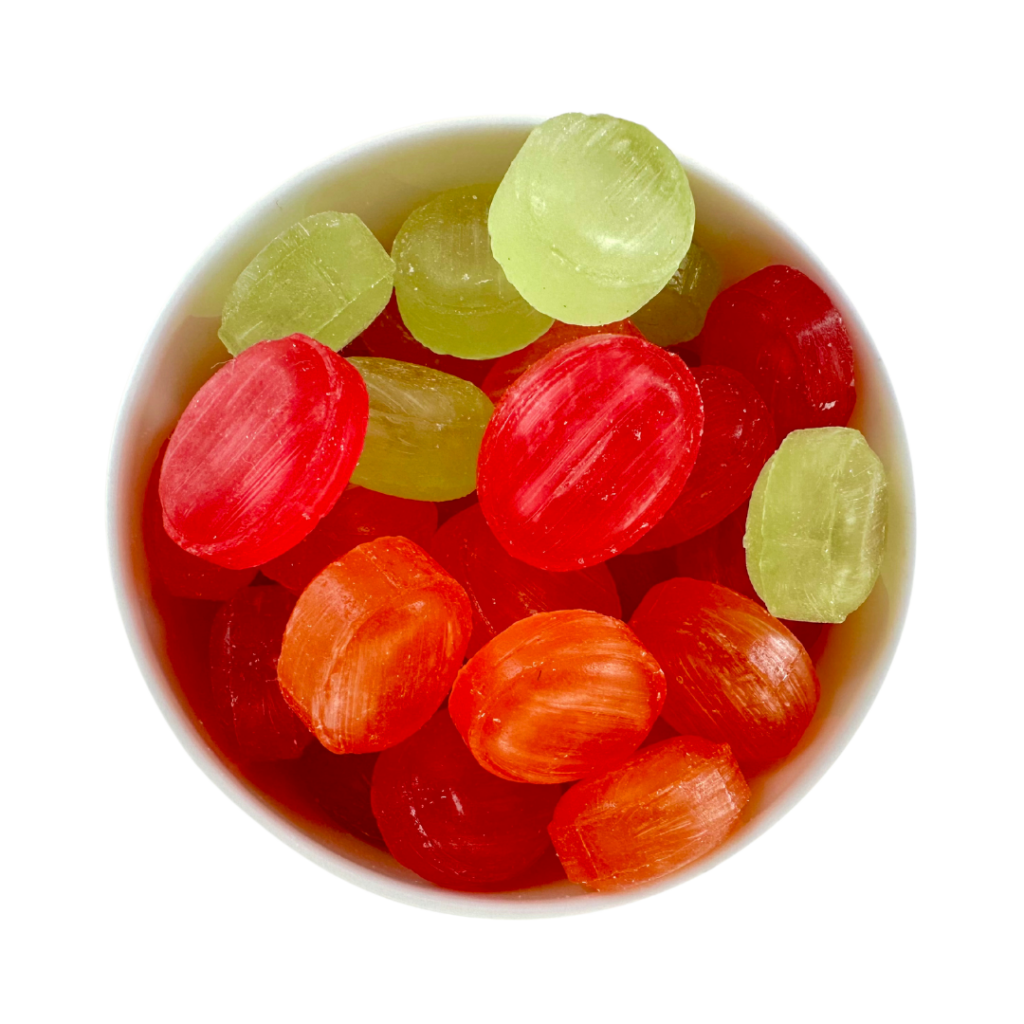Isomalt – Sugar free
x

Isomalt is a sugar substitute which is derived from sucrose. Isomalt is a sugar polyol and has a low caloric content, approximately half that of sucrose. This reduced calorie count contributes to its application in dietary contexts, particularly among individuals seeking to manage their caloric intake.
The non-cariogenic nature of Isomalt underscores its utilization in confectionery and dental health applications. It is less fermentable by oral bacteria, diminishing the risk of dental caries and enamel erosion, making it suitable for the formulation of sugar-free or reduced-sugar confections.
Isomalt exhibits stability under high temperatures, making it suitable to heat-intensive food processing techniques. This thermal resilience has led to its incorporation into baked goods, confectionery, and syrups.
Isomalt is today widely employed in various applications, including confectionery, bakery products, sugar substitutes, and pharmaceuticals. In the confectionery sector, it finds use as a sweetening agent for sugar-free hard-boiled candies and chocolates. In bakery products, it contributes sweetness and texture to cookies, pastries, and bread. Additionally, Isomalt serves as a sugar substitute in sugar-free syrups and sauces, accommodating the preferences of consumers seeking lower-calorie and glycemic-friendly alternatives.
In conclusion, the distinctive combination of reduced caloric content, low glycemic index, non-cariogenic properties, and thermal stability make Isomalt to a versatile ingredient in food, confectionery, and pharmaceutical applications. Its benefits encompass calorie management, blood sugar regulation, dental health, and satiety, aligning it with the evolving preferences of health-conscious consumers and food industry innovation.
- Candies and Confectionery Products: In sugar-free or reduced-sugar candies and chocolates, Isomalt can serve as the primary sweetener, providing the product body.
- Bakery Product: In bakery goods like cookies, pastries, and bread, isomalt can be used in the range of 5% to 30% of the total sugar content, contributing sweetness and texture.
- Sugar Decorations: Isomalt is popular for creating sugar decorations in cake decorating and pastry arts, where it can be melted, colored, and molded to form intricate designs.
- Nutritional and Pharmaceutical Excipients: In pharmaceutical applications, isomalt is used as an excipient or filler in tablets and capsules, often forming a significant portion of the dosage form.
- Flavor Masking Isomalt can be employed in flavor encapsulation to protect sensitive flavors and fragrances. Isomalt is also well known to mask unpleasant tastes and flavors sufficiently.
Benefits of using Isomalt:
- Low Caloric Content: Isomalt provides fewer calories compared to sucrose, making it beneficial for individuals seeking to reduce calorie intake while still enjoying sweetness.
- Low Glycemic Index: Isomalt has a low glycemic index (GI), meaning it has a minimal impact on blood sugar levels when consumed. This property is advantageous for individuals concerned about glycemic control..
- Dental Health: Isomalt is non-cariogenic, meaning it is less likely to promote tooth decay compared to sucrose and other sugars. It can be a part of dental health-conscious dietary choices.
- Digestive Sensitive: Isomalt is generally well-tolerated by many individuals and is suitable for those with digestive sensitivities or intolerances to other sugars.
- Calories: 2 calories per gram, which is half the caloric content of sucrose.
- Recommended Daily Intake: There is no specific recommended daily intake for isomalt, as it is typically used as an ingredient in various products rather than consumed on its own. Some individuals may experience digestive discomfort when consuming large quantities of isomalt. It is advisable to consume isomalt-containing products in moderation.
- Sweetness: Isomalt is approximately 45% to 65% as sweet as sucrose, depending on the formulation. Isomalt is less sweet than sucrose, making it suitable for applications where a milder sweetness level is desired.The sweetness of Isomalt is clean and without any significant aftertaste.
x
x

x
j
j